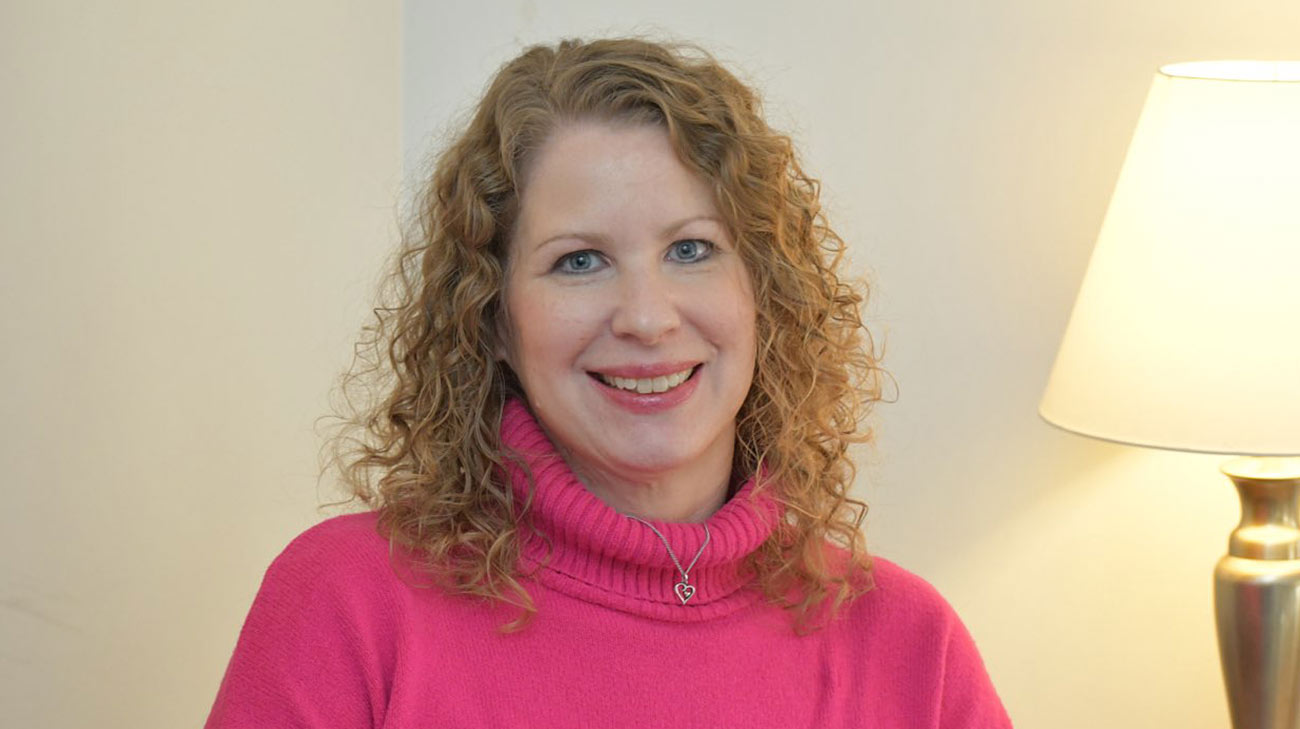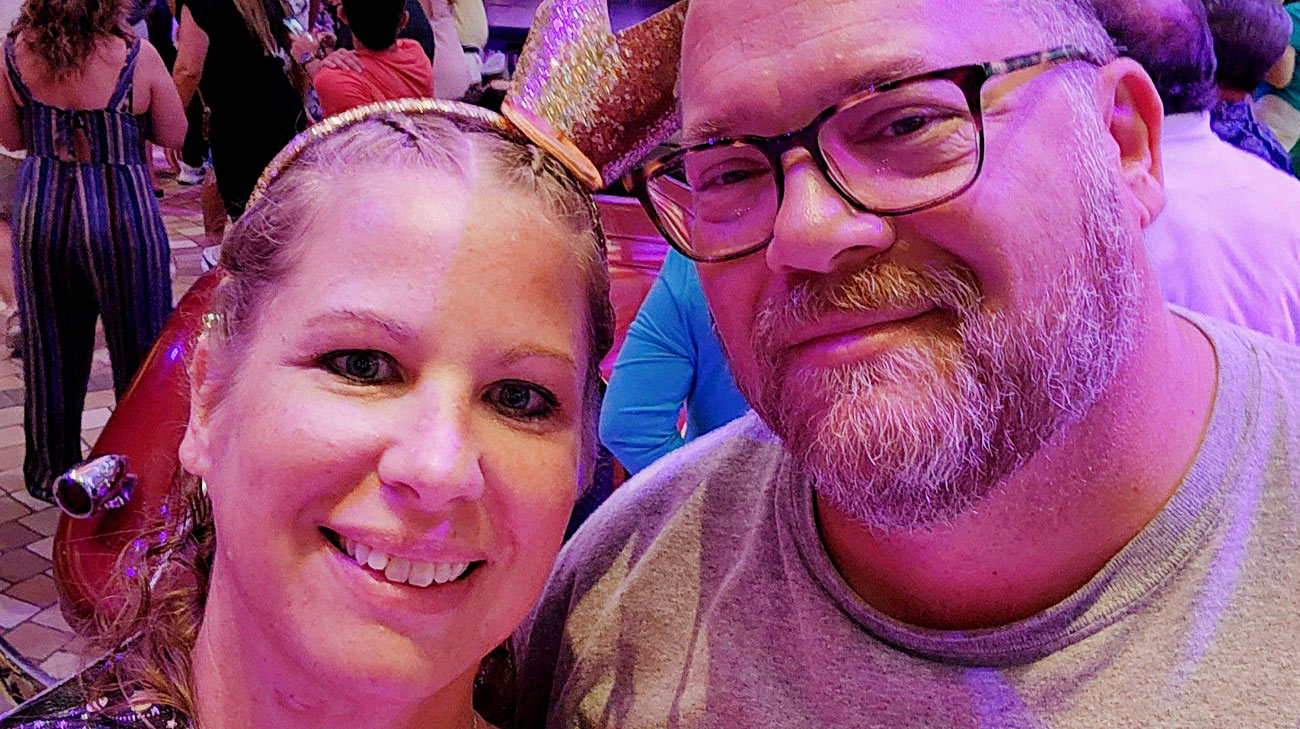
While exploring bariatric surgery for weight loss in 2008, Monica Rosco of Medina, Ohio, was diagnosed with obstructive sleep apnea.
“My insurance at the time said that to qualify for the surgery, one of the criteria I would need to show was a comorbidity,” she says. “I hadn’t even thought about the possibility of having sleep apnea.”
Sleep apnea, a condition in which breathing repeatedly stops and starts, can lead to cardiovascular disease, stroke and other health issues. “When they did an assessment, followed by a sleep study, they had to throw a CPAP (continuous positive airway pressure) mask on me right away,” she says.
Monica began using a CPAP machine every night. “It scared me to think about all of the health issues I could have had without it,” she says. “I was only 38.”
After having bariatric surgery in 2009, she thought it would be all right to stop using CPAP, which she did for a few years. “Then, I gained back some weight, and my husband said, ‘You’re snoring all the time.’ He’s a very light sleeper, and so it was a problem for him. I would have ignored it otherwise, as it wasn’t bothering me. But I was having some episodes where I woke up gasping. I had another sleep study, and they said, ‘You need to use CPAP.”
Monica struggled over the years with a variety of CPAP masks, unable to find a comfortable fit. In addition, “the pressure was too high on my machine,” she says. “But this was during the Covid pandemic, and people could not get new machines.”
In 2022, she learned of an implanted device called Inspire® that would allow her to breathe and sleep through the night without CPAP. The FDA-approved device delivers upper airway stimulation that is synchronized to a person’s breathing to relieve obstruction during sleep. It is an alternative option for patients who have not had success with CPAP and are good candidates for the implant.

Monica Rosco celebrated her 50th birthday with her husband John on a Caribbean cruise to Mexico.
She went for an evaluation with Alan Kominsky, MD, FACS, a sleep surgeon in Cleveland Clinic’s Department of Otolaryngology - Head and Neck Surgery. “People who are intolerant of CPAP can’t wear it for a whole variety of reasons. They can’t keep it on, they feel claustrophobic, etc.,” Dr. Kominsky says. “Patients who fall into certain categories with weight and anatomy can be candidates for Inspire therapy, which is like a pacemaker for the tongue.”
Monica was deemed to be a good candidate, which led to further assessment. “We look at how severe the sleep apnea is and their sleep patterns to determine whether it’s appropriate to examine them by using sleep endoscopy,” Dr. Kominsky says.
Endoscopy entails light sedation in an operating room at a level that allows the patient to breathe unassisted, mimicking sleep. A small telescope is placed inside the patient’s nose to visualize the soft palate and airway. “They have to collapse in a certain way, in a flat fashion, not curved and circular, for the device to work properly,” Dr. Kominsky says. “Approximately 90 percent of those selected for endoscopy will qualify for the implant.”
Once it is determined that the patient meets the criteria, the device is implanted during an outpatient procedure, under general anesthesia. “It requires two incisions, one in the upper neck by the jaw, which allows us to find the specific part of the nerve that goes to the tongue and makes it move,” Dr. Kominsky says. “We put an electric stimulation cuff around it. The other incision is in the upper chest, where we place the device and a sensor between the ribs, and then it’s all connected. The patient goes home, usually without the need for pain medication, and heals for a month. Then, we refer the patient to Brian Chen, MD, and his colleagues in Cleveland Clinic’s Sleep Disorders Center to activate and adjust it.”
When the device has been activated, the patient uses remote control to turn it on at night before going to sleep. From that point, treatment becomes automatic. “Each breath stiffens the tongue and opens an airway behind the tongue,” Dr. Kominsky says.
“It’s a strange feeling until you get used to it,” Monica says. “Once the device is turned on, the back of my throat collapses as my tongue muscle is forced forward and the airway opens. The higher the setting, the more forceful the muscle contraction. But when I’m asleep, I don’t feel it.”
In his experience, Dr. Chen says, patients like Monica, who have moderate to severe sleep apnea, are “very happy with their treatment.” He follows up with them every six weeks after the procedure until his patients are comfortably treating their sleep apnea, and every six months thereafter.
“There is less maintenance on their part than with CPAP,” he says. “In addition, the newest batteries for the device now last 11 years, and with suggestions from patients and practitioners, Inspire is always making scientific advancements.”
Monica says she is happy that she had the procedure, which has improved her personal relationships and her work life as a clerical manager at Cleveland Clinic. “I feel like I was crankier before and didn’t manage my stress as well. I feel better in general, healthier, with more energy. I am a heavier sleeper now, with more dreaming. I can feel the change.”
And there are additional benefits. “For our 25th wedding anniversary in the fall, we went to Europe for two weeks. It was so amazing not to have to travel with a CPAP, which I used to make my husband carry. I just put my device remote in my carry-on bag and could turn it on during the flight.
“Not dealing with a mask anymore has been the best part. It’s well over a year, and every night, I’m thankful.”
Related Institutes: Head & Neck Institute, Neurological Institute

